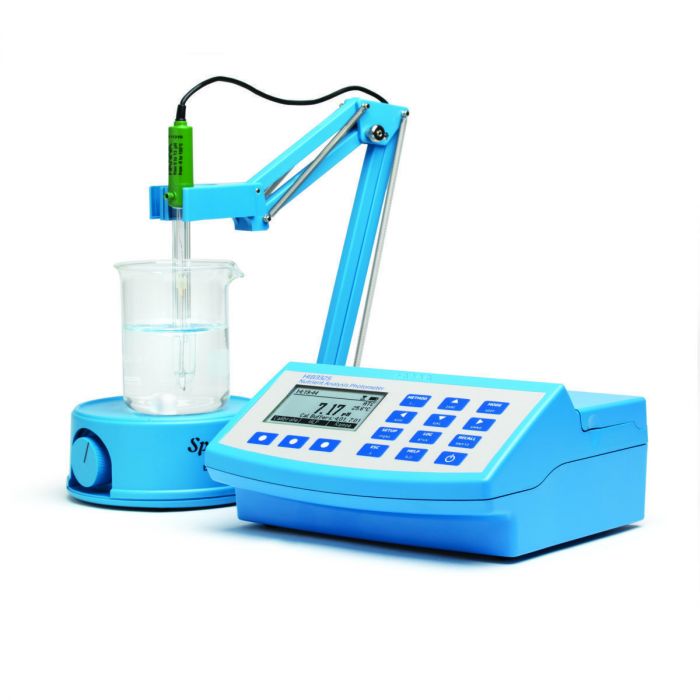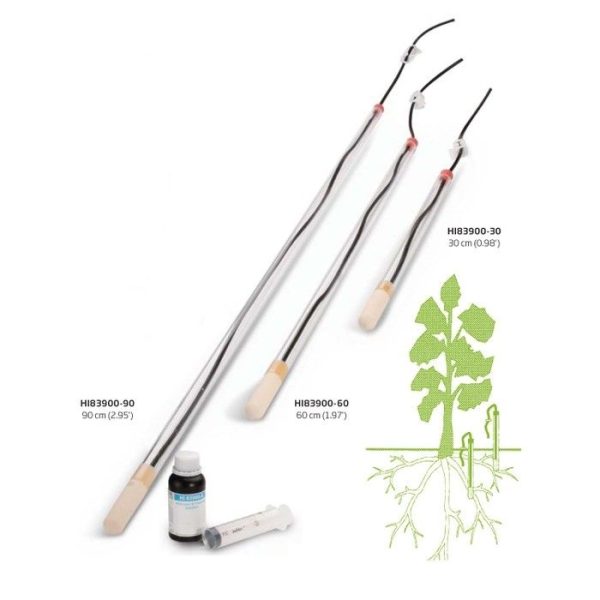In the modern era, plants can be grown in soil and in soilless media.
To get strong and healthy plants with a high yield, you need to pay attention to several factors, including the right ratio of nutrients.
Regardless of which growing option you have chosen, growing in the soil or in a soilless media, in the hope of getting healthy plants and high yields, you may have many questions about how to achieve this.
By choosing the best nutrient optimization for your plants, you can save up to 30% of money on an annual basis.
Need assistance?

Cultivation in soil
Soil is one of the most important natural resources and represents the basic base for the production of organic matter.
Soil is a natural substrate from which plants draw essential elements that are indispensable for their proper growth and development.
Land is a limited natural asset that is destructible, it is slowly formed and quickly destroyed in the process of improper use.
It is the basis of agricultural production and the condition for the survival of the living world on our planet.
The productive capacity of the soil is a factor that determines the productivity of agricultural production and implies the ability of plants to supply themselves with water and non-porous mineral substances through the root system.
Soil fertility is another important factor of any agricultural land.
Fertility represents a dynamic state of different physical, chemical and biological properties and processes in the soil, thanks to which different degrees of life of plants, animals and even people themselves are possible.
By using land in intensive plant production, there is often a disturbance in the balance of certain factors of soil creation and damage.
Man can increase or decrease soil fertility through his activity, most often agricultural production.
Cultivation in soilless media
If you have decided to grow in a soilless media, the situation is a little different.
In addition to choosing a good substrate, the expertise and experience of the grower, availability and cost, the soilless substrate must meet the appropriate physical, chemical and biological characteristics.
A high yield and good product quality of crops grown in soilless media is possible only if nutrition/fertigation is optimized.
Optimized nutrition implies accurate management of all factors that affect plant nutrition, namely:
- the composition of the nutrient solution
- water supply
- the temperature of the nutrient solution
- dissolved oxygen concentration
- electrical conductivity
- pH of the nutrient solution
If any of these factors are in a suboptimal relationship, plants can suffer from stress that leads to a drop in yield and product quality.
Media used for growing must also satisfy the following:
- A uniform texture that drains well but retains nutrients and water for the root system
- Low bulk density that facilitates assembly and transport (between 190 and 700 kg/m3)
- High porosity (between 50% and 85%)
- Particle size distribution to maintain a good balance between air and water retention (between 0.25-0.5 mm)
- pH between 5.0 and 6.5, which can also be easily adjusted
- Low content of soluble salts
- Chemical inertia, which means that the substrate does not affect the nutrient solution by releasing inorganic ions or immobilizing nutrients
- Ability to maintain original characteristics so that it can be used for many consecutive cycles of cultivation
- Absence of pathogens and pests and without any compounds toxic to plants
- The possibility of production in uniform batches (to enable the use of consistent fertilization programs)
- The ability of the substrate to recover from grower mistakes such as overwatering or overfertilization
Chemical inertia is another characteristic of soilless media.
Continuous application of nutrient solutions leads to salt accumulation and ionic imbalance in the substrate.
Especially in closed irrigation systems, there can be a rapid accumulation of sodium and chloride and a change in initial pH and an imbalance in the desired supply of plant nutrients.
Consequently, the electrical conductivity (EC), i.e. the concentration of toxic elements, increases and can threaten plant development.
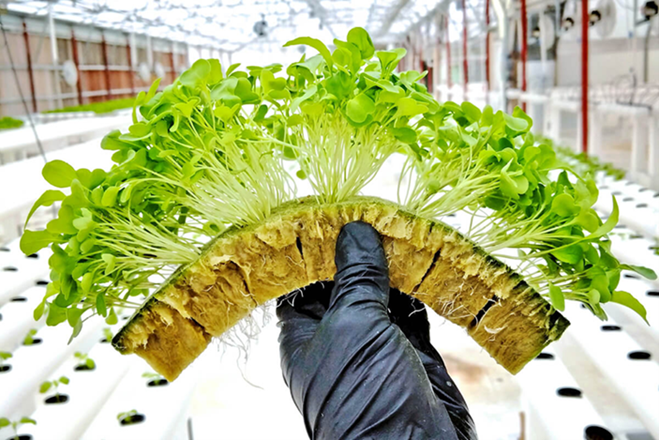
Open irrigation systems are an alternative to slow down the problem of salt accumulation, but this involves a huge waste of water and nutrients, which increases production costs and contaminates local groundwater and surface water.
The conclusion would be that both cultivation in soil and cultivation in the soilless media have their advantages and disadvantages.
The most important thing is to choose a substrate that suits your crops, environmental conditions, costs, labor and knowledge requirements.
If you want to optimize the consumption of nutrients, it is necessary to control them properly and often enough.
By choosing the right ratio of nutrients, you can save up to 30% of money on an annual basis.
Macro and microelements that influence good plant growth must be kept in a certain ideal ratio depending on the type of plant.
Macroelements
Nitrogen is an element necessary for vegetative and generative growth and development of plants.
Nitrogen deficiency causes plant growth retardation, yellowing of leaves, reduction of fruits and reduction of plant resistance to diseases.
Excess nitrogen causes excessive growth of the vegetative organs of plants, while generative growth decreases, fruit ripening is slower and the plant’s susceptibility to diseases is increased.
Phosphorus is an element that is necessary for the growth of generative organs, plant growth, cell division, better plant rooting, seed and fruit development, and fruit ripening.
Lack of phosphorus slows down the growth of plants as well as the formation of leaves and flowers.
An excess of phosphorus rarely occurs, and if it occurs, it causes reduced plant growth, and the leaves get dark spots.
Potassium is important for plant metabolism. It affects the uptake and transport of all nutrients and water, regulation of the pH value of cell juice, regulation of osmotic pressure and growth of young tissue. Increases resistance to diseases.
Lack of potassium in the oldest leaves of the plant on the edges causes chlorotic and necrotic spots and curling of the leaf.
A high ratio of N:K in the soil adversely affects the yield and quality of the fruit.
Calcium is an element of exceptional importance for the structure of cell membranes. If it is absent, the cells burst. Calcium affects cell division, growth and elongation of roots, plant resistance to diseases.
Calcium deficiency is observed in the outermost parts of the plant and in the young tissue (tip of the root, edges of the leaves, fruits).
Magnesium is an important component of chlorophyll and physiological processes in plants. In the absence of magnesium, the photosynthesis process and the breakdown of chlorophyll stop.
The consequences of magnesium deficiency can be seen on the oldest leaves of plants in the form of interveinal chlorosis, when the nerves remain green, and the surface between them turns yellow.
Sulfur enters into the composition of proteins, enzymes, coenzymes and amino acids.
The lack of sulfur can be seen on young leaves, since sulfur is immobile in the plant.
The plant lags behind in growth, the leaves begin to turn yellow, and the stems become brittle.
Microelements
The group of microelements includes:
Ni, B, Mn, Zn, Mo, Cu, Si, Cr, J, Se, Fe, Na, Sr, Co and Cl.
Iron is an important element for the process of photosynthesis. Iron increases resistance to drought and diseases, and regulates vitamin synthesis in fruits.
Iron deficiency occurs on alkaline soils, and manifests itself as chlorosis between the veins of the leaf. If the deficiency is greater, the leaves turn white or take on a scorched appearance.
Excess nitrogen causes excessive growth of the vegetative organs of plants, while generative growth decreases, fruit ripening is slower and the plant’s susceptibility to diseases is increased.
Boron enables the development of flowers, pollen fertility, fruit formation and proper fruit development.
Deficiency causes drying of side shoots of fruits and reduction of yield.
The excess manifests itself as chlorosis on the leaves.
Manganese is an important trace element because it is a special enzyme activator. It acts as a biocatalyst in the formation of chlorophyll and improves the formation of starch and sugar in plants.
Manganese deficiency can occur in alkaline soils. It manifests itself on the leaves in the form of chlorosis.
Zinc has multiple effects, the most important of which is in the formation of chlorophyll.
Zinc prevents the accumulation of excess acids in the leaf and participates in cell respiration.
The deficiency is observed on the side shoots of the plants, and in the case of a greater deficiency, there may be a decrease in yield.
Molybdenum is part of the chloroplasts of plants and is an important factor in photosynthesis. It regulates iron transport through the plant and contributes to nitrogen assimilation.
Deficiency causes older leaves to curl down the middle.
Copper affects directly and indirectly many physiological processes in the plant, increases the yield, increases the quality of the fruit and accelerates ripening.
Lack of copper leads to poorer fertilization, young plants wither, and the leaves turn gray and dry.
Hanna Instruments for nutrient content
The instruments you will use to measure the nutrient content of your plantation are:
HI83325-02
Multiparameter photometer
The HI83325 photometer provides accurate and repeatable photometric measurements every time.
The key parameters are: Ammonia, Calcium, Magnesium, Nitrates, Phosphorus, Potassium, Sulfates and pH.
Advanced optical system – unmatched performance of a desktop photometer.

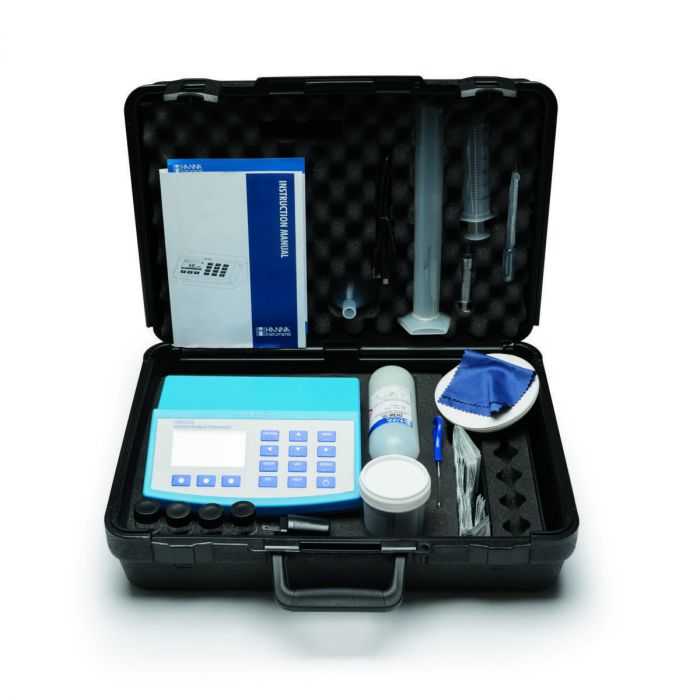
Consistent and thorough monitoring of plant nutrients is essential to maintain healthy growth and reproduction.
Potassium, needed in large quantities, plays a vital role in water intake and enzyme regulation. Calcium helps strengthen plant cell walls protecting against heat stress, while magnesium helps strengthen the immune system.
A digital pH electrode input allows the user to measure pH using a standard pH electrode.
Key features:
- Advanced optical system with brighter, long-lasting LED light source
- Built-in reaction timer for photometric measurements
- Displayed units of measurement plus chemical form
- Conversion of results at the push of a button
- Measurement of pH and temperature with one probe
- Good Laboratory Practice (GLP) – calibration information including date, time, buffers used, offset and slope for traceability
- CAL check alerts the user to potential problems during the calibration process
- Data logging – up to 1000 photometric and pH readings can be stored.
- Recorded readings can be quickly and easily transferred to a flash drive or computer. Data is exported as a .CSV file for use with spreadsheet programs.
SOIL SAMPLE
Soil sample can be prepared for analysis using a HANNA Soil preparation kit: you will need just your sample!
Direct extraction from the soil/soilless media can be convenient way to obtain a sample leaving you an extra time on your hands.
Extraction can be performed on any testing/sampling points utilizing HANNA lysimeters, available in several sizes depending on your cultivation type (30-60-90cm).
HI83900
Suction lysimeter
- For soil monitoring on root level
- Perfect companion to HI83325
- Monitors nutrients in the soil at the root level
The HI83900 suction lysimeter is constructed with a porous ceramic cap connected to a transparent tube for extracting the soil solution. A rubber capillary is inserted into the tube, which passes through the rubber cap and reaches the cream tip.
The HI83900 series lysimeter is an ideal tool for collecting soil solution samples and then performing quantitative chemical analysis.
In this way, the operator can easily monitor the level of nutrients such as ammonia, nitrate, phosphorus, potassium, sulfate, calcium and magnesium.
The HI83900 enables the extraction of the solution from the soil by creating a vacuum inside the sampling tube, which exceeds the water pressure in the soil.
This will establish a hydraulic gradient for the solution to flow through the porous ceramic cap and into the lysimeter tube. Usually, you need to draw a vacuum of about -60cb (centibar).
HI801
Spectrophotometer
The HI801 IRIS is an elegant and intuitive spectrophotometer that allows the measurement of all wavelengths of visible light.
Customize your methods, make a wide range of measurements and be sure of test accuracy with the Iris HI801 spectrophotometer.


The HI801 IRIS Spectrophotometer has a precise wavelength selection between 340 nm and 900 nm for complete method compliance and the accuracy required in industries such as professional laboratories, water treatment plants, wineries and more.
Results are consistent and accurate regardless of throughput thanks to a high-quality and uniquely designed optical system.
Customization options include multiple cuvette shapes and sizes, custom calibration curves and methods.
No need to measure conversions
Whether you’re testing for chlorine or performing enzyme tests, our spectrophotometer will conveniently display results in the units that matter most to you.
The HI801 IRIS can measure transmittance, absorbance and concentration based on your needs.
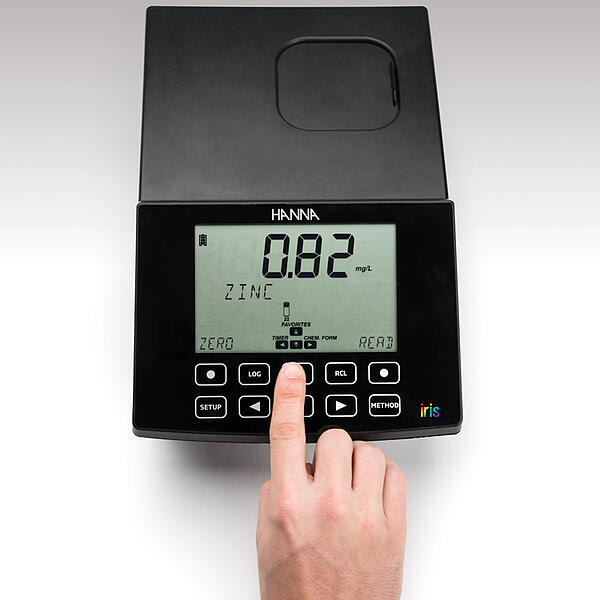
Pre-programmed methods with extension option
The HI801 IRIS Spectrophotometer comes pre-programmed with more than 80 commonly used chemical analysis methods to help you get your analysis started.
Simply update these methods by connecting to a computer or flash drive.
- Nitrogen
- Potassium
- Phosphate
- Ammonia
And much more…
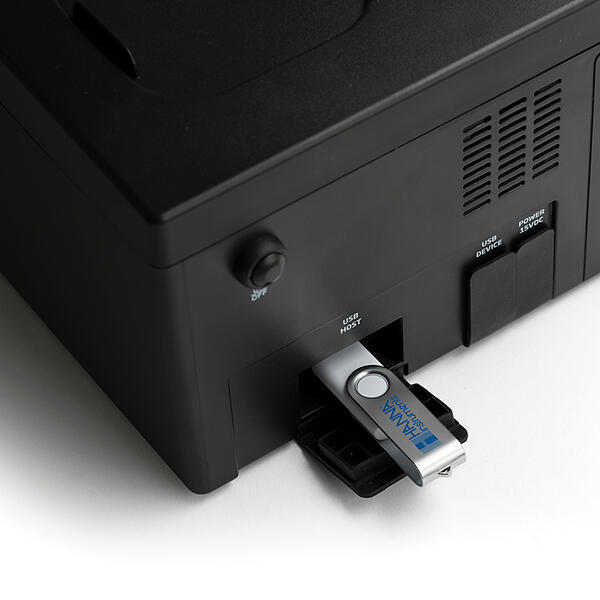
Designed for dynamic environments
The HI801 IRIS’ compact profile and long-lasting battery make it easy to place anywhere in your lab.
The rechargeable lithium-ion battery lasts for 3,000 measurements.
Have questions?
Contact a Hanna Technical Specialist at [email protected] or using our contact form.
AUTHOR:
Bojana Tomić-Burtić
Graduate Chemist in General Chemistry
REFERENCE:
Pardossi et al, 2011


